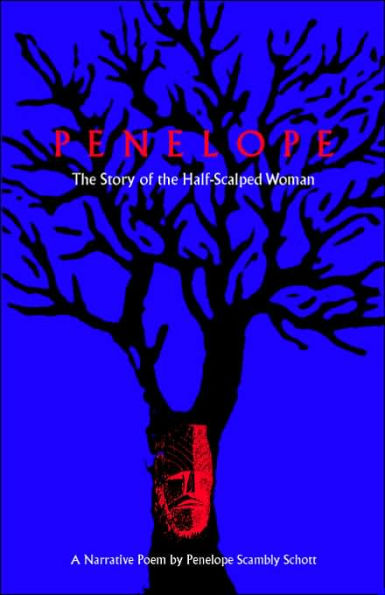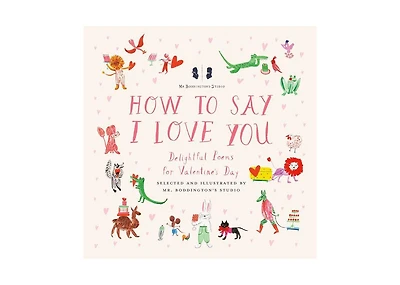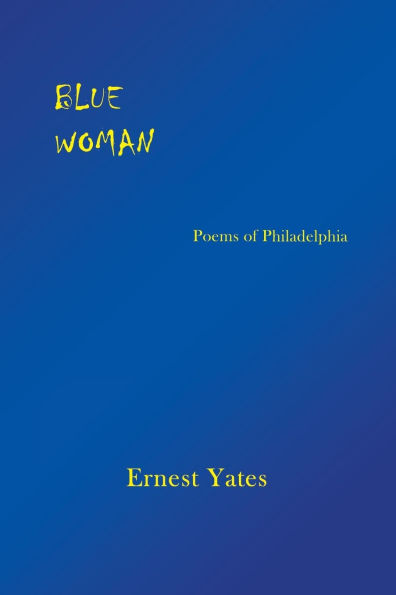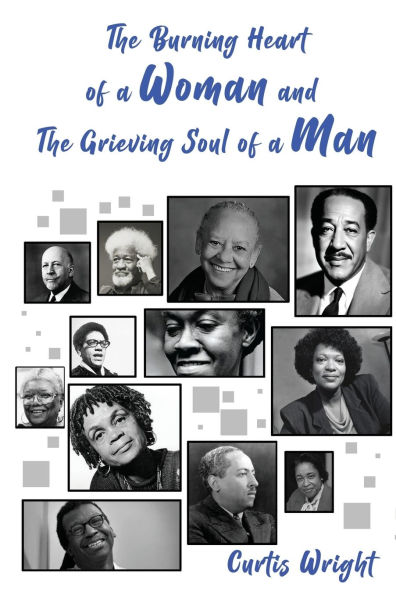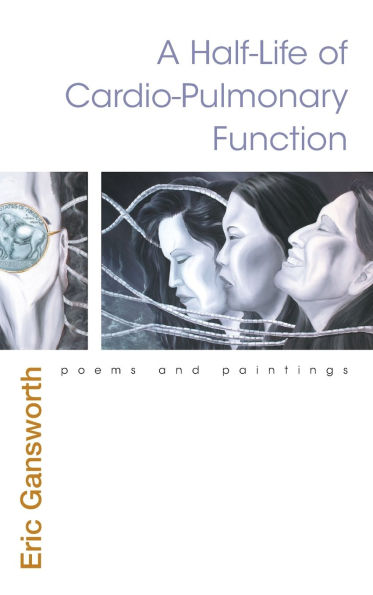Home
How to Cut a Woman Half: Poems
Barnes and Noble
Loading Inventory...
How to Cut a Woman Half: Poems in Bloomington, MN
Current price: $19.95


How to Cut a Woman Half: Poems in Bloomington, MN
Current price: $19.95
Loading Inventory...
Size: Paperback
Janis Harrington's
How to Cut a Woman in Half
is a testament to resiliency in the throes of mounting family tragedies and trials "beyond human comprehension." This odyssey from loss toward recovery and hope celebrates the boundless love and support between siblings. Using an adapted sonnet form, Harrington has wrought a taut and spellbinding tale in this finalist for the 2020 Able Muse Book Award.
PRAISE FOR
HOW TO CUT A WOMAN IN HALF
:
In this stunning sequence of sonnets-a sequence that reads like a novel, in which each sonnet is so masterfully crafted that its form disappears into the story it tells-Janis Harrington spins a larger narrative of intergenerational family tragedy, but also of sisterly devotion and resilience. The whole sweep of it is so compelling that once I started reading, I couldn't stop.
takes the reader through shock and grief and then, very subtly and tenderly, back from the edge of an abyss.
-Cecilia Woloch, author of
Tsigan: The Gypsy Poem
and
Earth
These deft narrative sonnets beautifully contain painful restraint and the breaking of sorrow; the slant and partial rhymes refuse to meet expectations for grieving an intentional death: "We look at each other, still / as the motionless hands on the clock's face, / marooned in this spotless, silent house, / nothing on the horizon to save us." The sisters save each other, learning to appreciate "the ordinary miracle of dawn."
-April Ossmann, author of
Anxious Music
Event Boundaries
These carefully wrought sonnets take readers on a journey "to grief's center" as the speaker supports her sister through new widowhood and, in the process, rediscovers and explores her own submerged grief. Many poems take place in the liminal space between "living and not," bardo moments that contain "all my life's partings." It is striking how fully present the speaker is in the experience of mourning, and how well suited the sonnet form is for containing such deeply personal wells of human sorrow. A beautiful and healing read.
-Rebecca Foust, author of
Paradise Drive
Only
ABOUT THE AUTHOR:
Janis Harrington's first book,
Waiting for the Hurricane
, won the Lena M. Shull Book Award from the North Carolina Poetry Society. Her poems have appeared in journals and anthologies, including:
Tar River Poetry
,
Journal of the American Medical Association
North Carolina Literary Review
, and
Beyond Forgetting: Poetry and Prose about Alzheimer's Disease
. She was the runner-up for the White Pine Press Poetry Prize 2020 and a finalist for the 2021 James Applewhite Poetry Prize and the 2022 Randall Jarrell Poetry Competition. After living in Switzerland for many years, she and her husband returned to Chapel Hill, North Carolina.
was a finalist for the 2020 Able Muse Book Award.
How to Cut a Woman in Half
is a testament to resiliency in the throes of mounting family tragedies and trials "beyond human comprehension." This odyssey from loss toward recovery and hope celebrates the boundless love and support between siblings. Using an adapted sonnet form, Harrington has wrought a taut and spellbinding tale in this finalist for the 2020 Able Muse Book Award.
PRAISE FOR
HOW TO CUT A WOMAN IN HALF
:
In this stunning sequence of sonnets-a sequence that reads like a novel, in which each sonnet is so masterfully crafted that its form disappears into the story it tells-Janis Harrington spins a larger narrative of intergenerational family tragedy, but also of sisterly devotion and resilience. The whole sweep of it is so compelling that once I started reading, I couldn't stop.
takes the reader through shock and grief and then, very subtly and tenderly, back from the edge of an abyss.
-Cecilia Woloch, author of
Tsigan: The Gypsy Poem
and
Earth
These deft narrative sonnets beautifully contain painful restraint and the breaking of sorrow; the slant and partial rhymes refuse to meet expectations for grieving an intentional death: "We look at each other, still / as the motionless hands on the clock's face, / marooned in this spotless, silent house, / nothing on the horizon to save us." The sisters save each other, learning to appreciate "the ordinary miracle of dawn."
-April Ossmann, author of
Anxious Music
Event Boundaries
These carefully wrought sonnets take readers on a journey "to grief's center" as the speaker supports her sister through new widowhood and, in the process, rediscovers and explores her own submerged grief. Many poems take place in the liminal space between "living and not," bardo moments that contain "all my life's partings." It is striking how fully present the speaker is in the experience of mourning, and how well suited the sonnet form is for containing such deeply personal wells of human sorrow. A beautiful and healing read.
-Rebecca Foust, author of
Paradise Drive
Only
ABOUT THE AUTHOR:
Janis Harrington's first book,
Waiting for the Hurricane
, won the Lena M. Shull Book Award from the North Carolina Poetry Society. Her poems have appeared in journals and anthologies, including:
Tar River Poetry
,
Journal of the American Medical Association
North Carolina Literary Review
, and
Beyond Forgetting: Poetry and Prose about Alzheimer's Disease
. She was the runner-up for the White Pine Press Poetry Prize 2020 and a finalist for the 2021 James Applewhite Poetry Prize and the 2022 Randall Jarrell Poetry Competition. After living in Switzerland for many years, she and her husband returned to Chapel Hill, North Carolina.
was a finalist for the 2020 Able Muse Book Award.
Janis Harrington's
How to Cut a Woman in Half
is a testament to resiliency in the throes of mounting family tragedies and trials "beyond human comprehension." This odyssey from loss toward recovery and hope celebrates the boundless love and support between siblings. Using an adapted sonnet form, Harrington has wrought a taut and spellbinding tale in this finalist for the 2020 Able Muse Book Award.
PRAISE FOR
HOW TO CUT A WOMAN IN HALF
:
In this stunning sequence of sonnets-a sequence that reads like a novel, in which each sonnet is so masterfully crafted that its form disappears into the story it tells-Janis Harrington spins a larger narrative of intergenerational family tragedy, but also of sisterly devotion and resilience. The whole sweep of it is so compelling that once I started reading, I couldn't stop.
takes the reader through shock and grief and then, very subtly and tenderly, back from the edge of an abyss.
-Cecilia Woloch, author of
Tsigan: The Gypsy Poem
and
Earth
These deft narrative sonnets beautifully contain painful restraint and the breaking of sorrow; the slant and partial rhymes refuse to meet expectations for grieving an intentional death: "We look at each other, still / as the motionless hands on the clock's face, / marooned in this spotless, silent house, / nothing on the horizon to save us." The sisters save each other, learning to appreciate "the ordinary miracle of dawn."
-April Ossmann, author of
Anxious Music
Event Boundaries
These carefully wrought sonnets take readers on a journey "to grief's center" as the speaker supports her sister through new widowhood and, in the process, rediscovers and explores her own submerged grief. Many poems take place in the liminal space between "living and not," bardo moments that contain "all my life's partings." It is striking how fully present the speaker is in the experience of mourning, and how well suited the sonnet form is for containing such deeply personal wells of human sorrow. A beautiful and healing read.
-Rebecca Foust, author of
Paradise Drive
Only
ABOUT THE AUTHOR:
Janis Harrington's first book,
Waiting for the Hurricane
, won the Lena M. Shull Book Award from the North Carolina Poetry Society. Her poems have appeared in journals and anthologies, including:
Tar River Poetry
,
Journal of the American Medical Association
North Carolina Literary Review
, and
Beyond Forgetting: Poetry and Prose about Alzheimer's Disease
. She was the runner-up for the White Pine Press Poetry Prize 2020 and a finalist for the 2021 James Applewhite Poetry Prize and the 2022 Randall Jarrell Poetry Competition. After living in Switzerland for many years, she and her husband returned to Chapel Hill, North Carolina.
was a finalist for the 2020 Able Muse Book Award.
How to Cut a Woman in Half
is a testament to resiliency in the throes of mounting family tragedies and trials "beyond human comprehension." This odyssey from loss toward recovery and hope celebrates the boundless love and support between siblings. Using an adapted sonnet form, Harrington has wrought a taut and spellbinding tale in this finalist for the 2020 Able Muse Book Award.
PRAISE FOR
HOW TO CUT A WOMAN IN HALF
:
In this stunning sequence of sonnets-a sequence that reads like a novel, in which each sonnet is so masterfully crafted that its form disappears into the story it tells-Janis Harrington spins a larger narrative of intergenerational family tragedy, but also of sisterly devotion and resilience. The whole sweep of it is so compelling that once I started reading, I couldn't stop.
takes the reader through shock and grief and then, very subtly and tenderly, back from the edge of an abyss.
-Cecilia Woloch, author of
Tsigan: The Gypsy Poem
and
Earth
These deft narrative sonnets beautifully contain painful restraint and the breaking of sorrow; the slant and partial rhymes refuse to meet expectations for grieving an intentional death: "We look at each other, still / as the motionless hands on the clock's face, / marooned in this spotless, silent house, / nothing on the horizon to save us." The sisters save each other, learning to appreciate "the ordinary miracle of dawn."
-April Ossmann, author of
Anxious Music
Event Boundaries
These carefully wrought sonnets take readers on a journey "to grief's center" as the speaker supports her sister through new widowhood and, in the process, rediscovers and explores her own submerged grief. Many poems take place in the liminal space between "living and not," bardo moments that contain "all my life's partings." It is striking how fully present the speaker is in the experience of mourning, and how well suited the sonnet form is for containing such deeply personal wells of human sorrow. A beautiful and healing read.
-Rebecca Foust, author of
Paradise Drive
Only
ABOUT THE AUTHOR:
Janis Harrington's first book,
Waiting for the Hurricane
, won the Lena M. Shull Book Award from the North Carolina Poetry Society. Her poems have appeared in journals and anthologies, including:
Tar River Poetry
,
Journal of the American Medical Association
North Carolina Literary Review
, and
Beyond Forgetting: Poetry and Prose about Alzheimer's Disease
. She was the runner-up for the White Pine Press Poetry Prize 2020 and a finalist for the 2021 James Applewhite Poetry Prize and the 2022 Randall Jarrell Poetry Competition. After living in Switzerland for many years, she and her husband returned to Chapel Hill, North Carolina.
was a finalist for the 2020 Able Muse Book Award.

![About A Woman [Black Ice Vinyl] [Barnes & Noble Exclusive]](https://prodimage.images-bn.com/pimages/0843930112449_p0_v1_s600x595.jpg)

